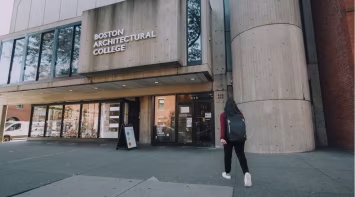Those of us who worked in international education immediately after 9/11 would never have imagined something as transformational to our way of life would happen again in our lifetimes. We were wrong. With the Covid-19 global pandemic, international education was turned on its head literally overnight when decisions were made to call back study abroad students, take all classes online, and cancel in-person travel for the foreseeable future.
From admitted students for the incoming fall class to junior prospects and beyond, your audiences need answers (as do you) as to what the future holds for your institution. Decisions on campus at the macro level in times of significant crisis often get made with little or no input from those on the ground in regular communication with prospective students. From all the surveys that have examined prospective international students’ plans and their expectations in the face of COVID-19, one thing quickly becomes clear: they need clarity.
Campus updates – How are you re-opening?
While there were exceptions made for currently enrolled F-1 students by DHS (USCIS) this spring when everyone went online completely, guidance released on July 24 indicates a different reality for future students. At present, if your new international students arrive at the border after successfully obtaining a student visa, they will not be admitted if your college is online only for the fall.
More importantly, your incoming class wants to know what to expect. Unless you’ve already communicated the above scenario (in more positive terms) of going online-only this fall, new students could be in for a rude awakening. According to a running list published by the Chronicle, 49% of U.S. colleges are planning for in-person instruction (down from 65% in mid-June. Many institutions made some very bold proclamations about their intent to have seated classes this fall. Others, like the Cal State system, Harvard, and USC have indicated they’ll be online only for the fall. While many college leaders might prefer to be in-person, the lingering impact of COVID-19 on your returning students, faculty, and staff may produce some last-minute changes that will lead to significant complications for new students if you go online only before classes begin.

CP-ImageCP
Image courtesy of The Chronicle of Higher Education
For international students – what are they facing?
Most institutions have a COVID-19 updates page on their sites, which is an absolute must. But how many of those pages have critical updates from your office related to new international students? Have you been regularly messaging through social media, messaging apps, and email to keep admitted students in the loop? Everyone fears the unknown. Unknown happens when there is an information vacuum. As a result, it is mission-critical that your incoming overseas students know what the plan is. Why? According to data from IDP Connect’s most recent survey (July, 2020), 74% of respondents from top source countries expect to start their studies as planned. If that’s not the case at your institution, they deserve to know.

For those 26% not planning to start as they had hoped, safety and travel uncertainties present the largest obstacles to their study plans. Travel is still not yet possible outside many newly admitted students' home countries, with travel bans being the rule rather than the exception. International flights are at a small fraction of what they normally would be this time of year. While there are travel bubbles for tourism being allowed in limited locations, the simple prospect of being able to get on a plane to come to study this fall is not yet possible for most international students. Though for incoming EU and UK students travel bans have been lifted, for the rest of the world’s ability to enter the U.S. no official statements have been made yet nor what health screening, testing, and/or mandatory quarantining procedures will be put in place. On that note, Is your campus preparing for housing new international students (or those from domestic hot spots) who must be quarantined for two weeks before being allowed to fully join campus life? Check out IDP Connect’s latest findings on how willing students are to quarantine in order to start face-to-face instruction more quickly.
Over the past month, I’ve received almost daily messages from university colleagues and clients asking if new international students will be able to get visas for fall entry. My answer has increasingly been an emphatic “no.” The reality is most U.S. embassies and consulates, particularly in key markets, are still closed for visa services. The State Department has not provided regular updates on this important issue, but an immigration law firm has provided regular updates on their site. Keep in mind in a normal recruitment cycle we would be in peak student visa season right now through the end of August. New international students have been unable to apply for visas since March. Until consulates reopen and regular appointments can be scheduled (many currently say October or November is the first available time for interviews), the only hope is for either ameliorative action to be taken, as a recent GOP congressional letter to Secretary Pompeo requested for waiving of the in-person interview requirement, or asking for emergency appointments to be granted locally. Unfortunately, such unusual action is not on the cards at this time. Offering deferrals for new international students or beginning online from their home country is, at this late stage, the most practical though least palatable for students at this juncture. Of course, if your institution is going online-only this fall, these are the only two options.
At this juncture, giving options to your students, whether you are opening online or in-person this fall, is an absolute must. Looking at the results of the same IDP Connect survey, most students still want face-to-face instruction and wish to defer a semester or so until that is possible. How is your college responding to this concern?
Make certain your office is communicating regularly and on-message about what your plans are for this fall. Recognize the incredible obstacles that new international students coming directly from overseas will face to even make it to the U.S. in time for studies. Be realistic in your expectations for new international students on campus this fall, and be transparent with new students and parents who still wish to attend. You can’t overcommunicate in these situations.
In these challenging times, U.S. institutions must demonstrate flexibility and clearly communicate their plans. More often than not, flexibility is forced on us by circumstances. But for colleges that value being nimble and adaptable in international student recruitment practices; in a global competition for the attention of internationally mobile students, having that mindset will set you apart.
You might like...

Why you should add retargeting to your digital marketing toolkit
Understand how retargeting could benefit your institution

Digital Marketing Case Study: The Boston Architectural College
Explore the results of a highly effective retargeting campaign with The Boston Architectural College




